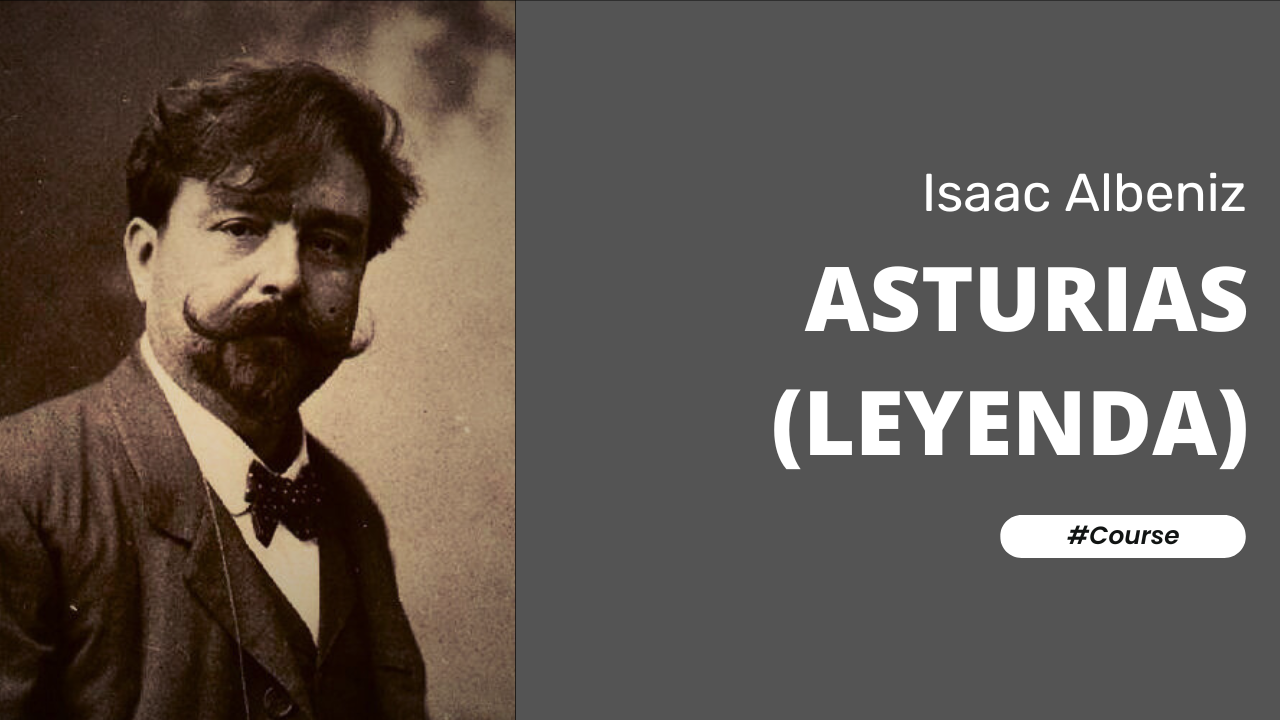Granada by Issac Albeniz
Introduction
“Granada” by Isaac Albéniz is a captivating piece that has become a cherished part of the classical guitar repertoire. Originally composed for piano as part of Albéniz’s suite “Suite Española, Op. 47,” “Granada” beautifully captures the essence of the Andalusian city, evoking its rich cultural heritage and romantic landscapes. Isaac Albéniz, a prominent Spanish composer of the late 19th and early 20th centuries, is renowned for his ability to blend traditional Spanish folk music with classical forms, creating works that are both technically challenging and deeply expressive.
Transcribed for classical guitar, “Granada” takes on a new dimension, highlighting the instrument’s lyrical and expressive capabilities. The piece opens with a serene and flowing melody that sets a contemplative mood, followed by intricate passages that mimic the sounds of a Spanish guitar. The transcription maintains the original’s rich harmonies and intricate rhythms, allowing guitarists to explore the full range of the instrument’s tonal palette.
Performing “Granada” on classical guitar requires a delicate touch and a deep understanding of its emotional nuances. The guitarist must convey the piece’s lyrical beauty and rhythmic vitality, capturing the spirit of Andalusia. Attention to dynamics, phrasing, and articulation is crucial to bring out the contrasting sections and expressive depth of the piece.
“Granada” stands as a testament to Albéniz’s genius in creating music that transcends its origins, making it a timeless addition to the classical guitar repertoire. Its combination of technical demands and emotive power ensures its enduring popularity among performers and audiences alike.
The original Suite Española Op. 47 contained four pieces – Cataluña, Cuba, Granada, & Sevilla. Each of the 4 pieces were written to reflect an area of Spain and they were composed for the then Queen of Spain. In later publications several other pieces were added to the suite including Aragón, Asturias, Cádiz, & Castilla.
This piece is full of contrast and challenges.
-
a multitude of triplets that usually need to to played whilst holding down a chord (never an easy thing)
-
several sections with prolonged barre
-
scale runs
-
artificial harmonics
-
diminuendo, crescendo
-
rallentando
-
naturale and ponticello
Musical Style
Isaac Albéniz’s musical style is a masterful blend of traditional Spanish folk music and classical forms, characterized by its vibrant rhythms, rich harmonies, and evocative melodies. His compositions often draw on the diverse regional music of Spain, incorporating elements like flamenco rhythms, Andalusian scales, and folk dances. Albéniz’s piano works, many of which have been transcribed for classical guitar, showcase his ability to capture the essence of Spanish culture while maintaining a sophisticated, classical structure. His music is marked by its emotional depth, technical complexity, and the ability to convey vivid imagery through sound.
Notable Pieces
Five notable pieces by Isaac Albéniz:
• Asturias (available as a course here on NBN Guitar)
• Sevilla (available as a course here on NBN Guitar)
• Granada
• Cádiz
• Tango in D
Let your fingers fly!
Josh
About this Course
Introduction
“Granada” by Isaac Albéniz is a captivating piece that has become a cherished part of the classical guitar repertoire. Originally composed for piano as part of Albéniz’s suite “Suite Española, Op. 47,” “Granada” beautifully captures the essence of the Andalusian city, evoking its rich cultural heritage and romantic landscapes. Isaac Albéniz, a prominent Spanish composer of the late 19th and early 20th centuries, is renowned for his ability to blend traditional Spanish folk music with classical forms, creating works that are both technically challenging and deeply expressive.
Transcribed for classical guitar, “Granada” takes on a new dimension, highlighting the instrument’s lyrical and expressive capabilities. The piece opens with a serene and flowing melody that sets a contemplative mood, followed by intricate passages that mimic the sounds of a Spanish guitar. The transcription maintains the original’s rich harmonies and intricate rhythms, allowing guitarists to explore the full range of the instrument’s tonal palette.
Performing “Granada” on classical guitar requires a delicate touch and a deep understanding of its emotional nuances. The guitarist must convey the piece’s lyrical beauty and rhythmic vitality, capturing the spirit of Andalusia. Attention to dynamics, phrasing, and articulation is crucial to bring out the contrasting sections and expressive depth of the piece.
“Granada” stands as a testament to Albéniz’s genius in creating music that transcends its origins, making it a timeless addition to the classical guitar repertoire. Its combination of technical demands and emotive power ensures its enduring popularity among performers and audiences alike.
The original Suite Española Op. 47 contained four pieces – Cataluña, Cuba, Granada, & Sevilla. Each of the 4 pieces were written to reflect an area of Spain and they were composed for the then Queen of Spain. In later publications several other pieces were added to the suite including Aragón, Asturias, Cádiz, & Castilla.
This piece is full of contrast and challenges.
-
a multitude of triplets that usually need to to played whilst holding down a chord (never an easy thing)
-
several sections with prolonged barre
-
scale runs
-
artificial harmonics
-
diminuendo, crescendo
-
rallentando
-
naturale and ponticello
Musical Style
Isaac Albéniz’s musical style is a masterful blend of traditional Spanish folk music and classical forms, characterized by its vibrant rhythms, rich harmonies, and evocative melodies. His compositions often draw on the diverse regional music of Spain, incorporating elements like flamenco rhythms, Andalusian scales, and folk dances. Albéniz’s piano works, many of which have been transcribed for classical guitar, showcase his ability to capture the essence of Spanish culture while maintaining a sophisticated, classical structure. His music is marked by its emotional depth, technical complexity, and the ability to convey vivid imagery through sound.
Notable Pieces
Five notable pieces by Isaac Albéniz:
• Asturias (available as a course here on NBN Guitar)
• Sevilla (available as a course here on NBN Guitar)
• Granada
• Cádiz
• Tango in D
Let your fingers fly!
Josh




